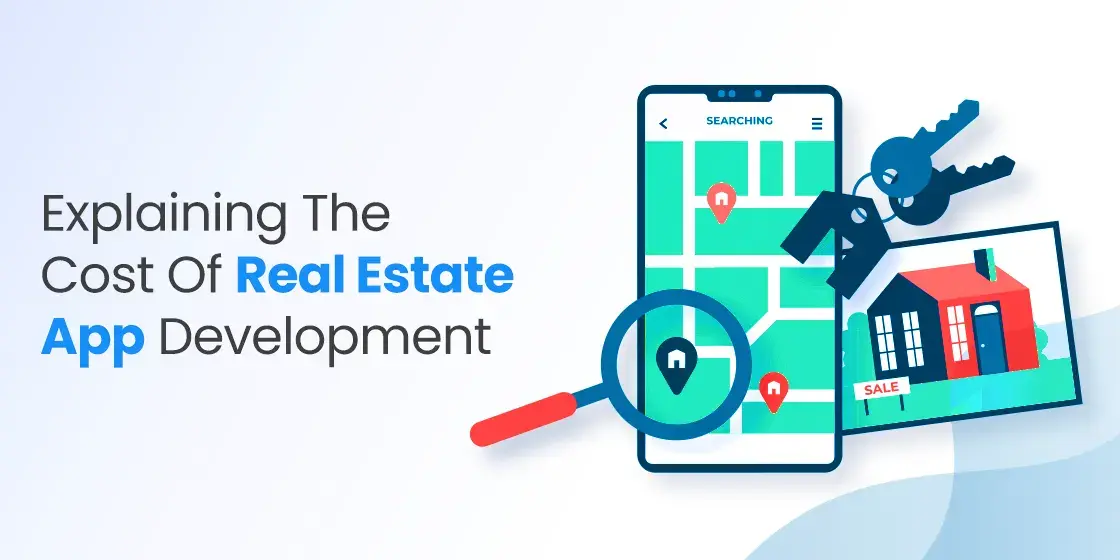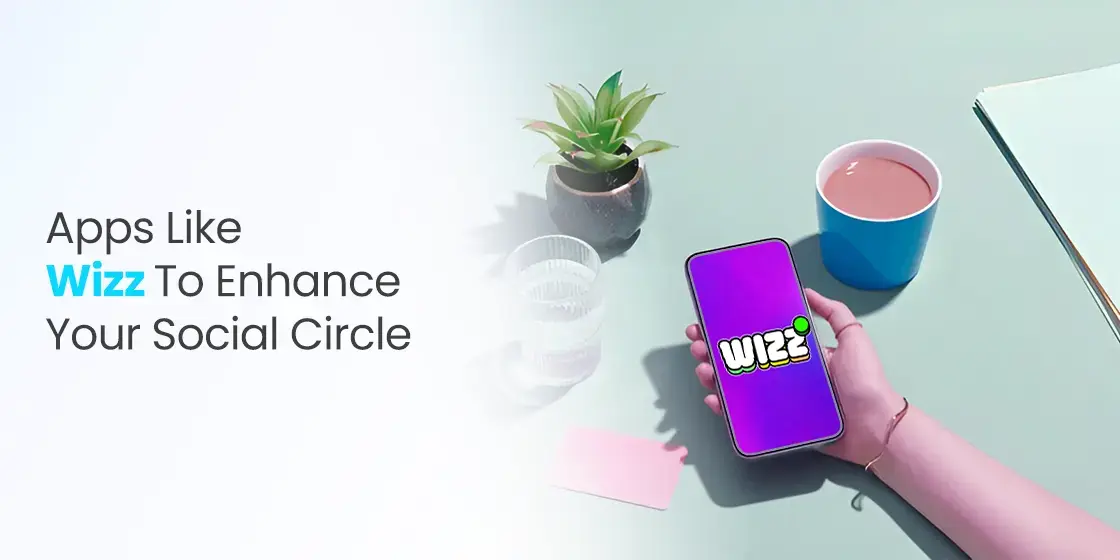Table of Content
Discover What It Costs to Build a Real Estate App Like Property Finder in 2025
Building a real estate app in 2025 isn’t just about putting property listings on a screen anymore. The game has completely changed.
You know what I’m talking about if you’ve ever tried using those clunky real estate websites from five years ago. Remember having to fill out endless forms just to see basic property details? Or dealing with agents who took forever to get back to you? Those days are long gone, and honestly, thank goodness for that.
Today’s users expect lightning-fast property searches, virtual tours, instant messaging with agents, and AI-powered recommendations that actually make sense. They want to swipe through properties like they’re browsing Instagram, get mortgage pre-approvals without leaving the app, and schedule viewings with a single tap.
The question isn’t whether you should build a real estate app – it’s how to build one that doesn’t just survive but absolutely dominates in this competitive market. And while the investment is significant, but the potential returns are massive. Let’s take a look at the process from the perspective of a professional mobile app development company, and discover how they would approach such a project.
The Real Estate App Revolution
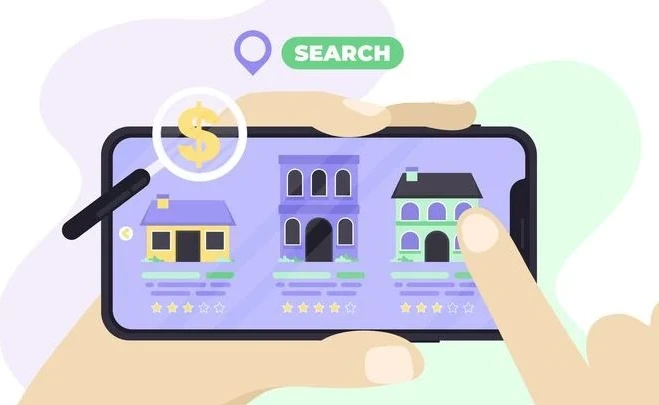
The numbers tell a story that’s hard to ignore. The global real estate software market hit $3.8 billion in 2024 and is projected to reach $4.6 billion by 2031. But here’s what’s really interesting – mobile usage now accounts for 76% of all property searches among millennials and Gen Z buyers.
Think about that for a second. Three out of four potential buyers are starting their property journey on their phones. Yet many real estate companies are still treating mobile as an afterthought. This shift in behavior is driving the massive growth we’re seeing in real estate app development. Companies that recognize this aren’t just building apps; they’re building entirely new customer experiences.
The Property Finder Success Story
Property Finder didn’t become the dominant real estate platform in the Middle East by accident. They understood early on that the future was mobile-first, not mobile-friendly. Their app gets 16 million monthly visitors and controls 65% of the market share because they solved real problems that their competitors ignored.
They made property searching feel effortless. Users can browse thousands of listings with intuitive filters, get instant notifications about new properties, and connect directly with verified agents – all within a beautifully designed mobile experience. In fact, we can say that Property Finder’s success serves as a mobile app development guide for others looking to enter this niche.
But here’s the kicker: their success isn’t just about features. It’s about understanding their users so deeply that every interaction feels natural and valuable.
Types of Real Estate Apps That Actually Make Money
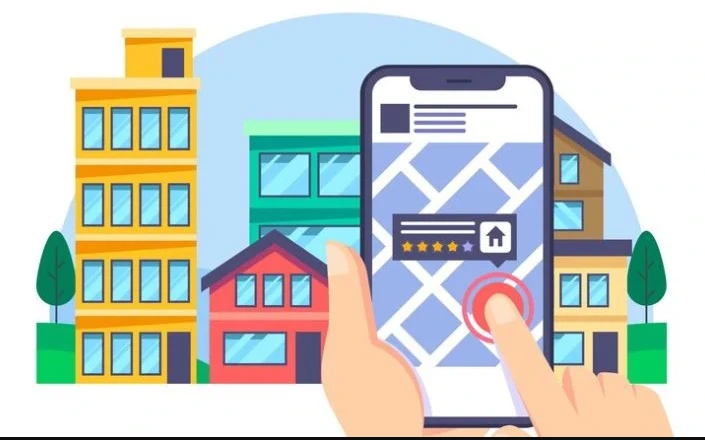
Not all real estate apps are created equal. Some barely break even, while others generate millions in revenue. The difference usually comes down to choosing the right app type for your market and executing it flawlessly. Here are the top types of real estate app development being done today.
Property Search and Listing Apps
These are the heavy hitters – think Zillow, Realtor.com, or Property Finder. They’re essentially digital marketplaces where buyers browse properties and connect with sellers or agents.
Revenue potential: High (if you can reach scale)
Development complexity: Medium to High
Time to market: 6-12 months for MVP
The challenge with these apps is the chicken-and-egg problem. You need properties to attract buyers, but you need buyers to attract property owners. Most successful apps solve this by partnering with existing real estate agencies or acquiring property data through MLSs (Multiple Listing Services).
Key success factors:
- Comprehensive property database
- Lightning-fast search functionality
- High-quality photos and virtual tours
- Seamless agent communication tools
Real Estate Investment Apps
This category is exploding right now. Apps like Fundrise and RealtyMogul let users invest in real estate with relatively small amounts of money. Some focus on fractional ownership, others on REITs (Real Estate Investment Trusts).
Revenue potential: Very High
Development complexity: High (heavy financial regulations)
Time to market: 8-15 months
These apps are complex because they’re essentially financial products. You’re dealing with SEC regulations, KYC (Know Your Customer) requirements, and sophisticated investment tracking systems.
Key success factors:
- Regulatory compliance from day one
- Transparent fee structures
- Real-time investment tracking
- Educational content for new investors
Property Management Apps
These target landlords and property managers who need to track rent payments, maintenance requests, and tenant communications. The market is less crowded than property search apps, but the revenue per user can be much higher.
Revenue potential: Medium to High
Development complexity: Medium
Time to market: 4-8 months
Property managers are often willing to pay substantial monthly fees for software that saves them time and reduces headaches. We’re talking $50-200 per property per month for comprehensive solutions.
Key success factors:
- Automated rent collection
- Maintenance request tracking
- Financial reporting and analytics
- Integration with accounting software
Mortgage and Financing Apps
These apps help users get pre-approved for mortgages, compare loan options, and track the financing process. Rocket Mortgage basically created this category and proved how profitable it can be.
Revenue potential: Very High (commission-based)
Development complexity: High
Time to market: 6-12 months
The revenue model here is typically commission-based. When someone gets a mortgage through your app, you earn a percentage of the loan value. For a $500,000 mortgage, that could be $2,000-5,000 in commission.
Key success factors:
- Integration with multiple lenders
- Real-time rate comparisons
- Streamlined application process
- Credit score monitoring
Virtual Tour and AR Apps
With remote viewing becoming standard, apps focused on immersive virtual tours and augmented reality are gaining traction. Some are standalone products, others integrate with existing real estate platforms.
Revenue potential: Medium
Development complexity: High
Time to market: 6-10 months
These apps often charge per property or offer subscription models to real estate agencies. The technology requirements are significant – you need 3D cameras, advanced rendering capabilities, and robust content delivery networks.
Key success factors:
- High-quality 3D rendering
- Fast loading times
- Mobile optimization
- Easy sharing capabilities
Emerging Real Estate App Features for 2025 and Beyond
- Blockchain Property Records Some forward-thinking apps are starting to integrate blockchain for transparent property histories and simplified transactions. This is still early-stage but worth considering for differentiation.
- IoT Integration Smart home integration allows users to control and monitor property features remotely. This is particularly valuable for rental and property management apps.
- Social Features Community aspects like neighborhood forums, resident reviews, and local event integration are becoming more common in comprehensive real estate platforms.
Real Estate App Development Cost Breakdown
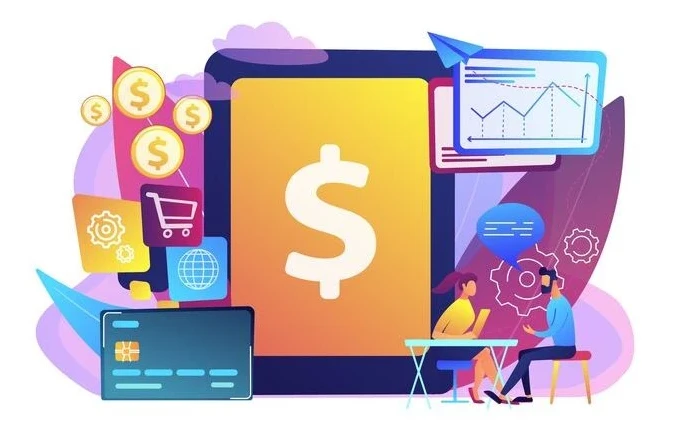
Let’s talk numbers. And I mean real numbers, not the vague ranges you see in most articles that don’t help anyone make actual decisions.
Simple Real Estate App: $35,000 – $65,000
This covers a basic property search app with standard features. Think of it as your MVP that proves the concept and validates market demand.
What you get:
- Basic property search and filtering
- Property detail pages with photos
- Simple contact forms
- Basic user profiles
- Standard map integration
- iOS or Android (single platform)
Development timeline: 4-6 months
Team size: 4-5 developers
This level is perfect for testing your market or building a focused solution for a specific niche. Don’t expect to compete with Zillow at this level, but you can definitely validate whether your target users want what you’re building.
Medium Complexity App: $65,000 – $120,000
This is where things get interesting. You’re building an app that users will actually want to use instead of just download once and delete. This is similar to banking or restaurant app development, which customers will use sporadically, such as once every few days at least.
Additional features include:
- Advanced search with AI recommendations
- Interactive maps with neighborhood data
- In-app messaging and notifications
- Virtual tour integration
- Basic mortgage calculator
- User reviews and ratings
- Admin dashboard for property management
- Both iOS and Android
Development timeline: 6-9 months
Team size: 6-8 developers
This range covers most successful real estate apps. You have enough features to create a compelling user experience while keeping costs manageable.
Complex Real Estate Platform: $120,000 – $250,000+
Now we’re talking about building a comprehensive real estate ecosystem that can compete with the big players.
Advanced features include:
- AI-powered property recommendations
- Augmented reality property viewing
- Integrated mortgage pre-approval system
- Advanced analytics and market insights
- Multi-language support
- CRM integration for agents
- Transaction management tools
- Advanced security features
- Scalable cloud infrastructure
- Comprehensive admin and analytics panels
Development timeline: 9-15 months
Team size: 10-15 developers
This level is for serious players who want to dominate their market. The investment is substantial, but so is the potential for market disruption.
Enterprise Real Estate Solutions: $250,000+
These are custom solutions for large real estate companies, franchise networks, or government agencies that need specialized functionality.
Enterprise features:
- Custom API integrations
- Advanced compliance and security measures
- White-label solutions
- Enterprise-grade scalability
- Custom analytics and reporting
- Multi-tenant architecture
- Advanced workflow automation
Development timeline: 12-24 months
Team size: 15+ developers
Factors That Drive Up Your Development Budget
Understanding what makes real estate app development expensive helps you make smarter decisions about where to invest your money. Think of the top taxi apps in Dubai, and how they are available for both Android and iOS users. What would be the cost incurred every time the app is updated? Let’s take a look at some of the top cost-affecting factors.
Platform Complexity and Choices
- Single Platform vs. Cross-Platform Building for just iOS or Android cuts your development time roughly in half, but limits your market reach. Cross-platform frameworks like Flutter or React Native can reduce costs by 30-40% compared to building separate native apps, but may sacrifice some performance and platform-specific features.
- Web Application Integration Many real estate apps also need web versions for agents and administrators. This adds 20-30% to your development costs but significantly improves usability for power users.
Third-Party Integrations
Real estate apps rarely work in isolation. The more external systems you need to connect with, the higher your costs.
- MLS (Multiple Listing Service) Integration Accessing property data through MLS systems is crucial but complex. Each MLS has different APIs, data formats, and access requirements. Budget $15,000-30,000 just for comprehensive MLS integration.
- Mapping and Location Services Google Maps API costs can add up quickly with heavy usage. For a medium-traffic app, expect $500-2,000 monthly just for mapping services. Alternative providers like Mapbox can reduce costs but require more integration work.
- Financial Service APIs Mortgage calculators, credit checks, and pre-approval systems require integration with financial services. These often have strict security requirements and can add $20,000-50,000 to development costs.
- CRM and Marketing Tool Integration Real estate agents use various CRM systems. Supporting popular platforms like Salesforce, HubSpot, or industry-specific tools like Chime or Follow Up Boss adds complexity but creates value for professional users.
Advanced Technology Implementation
- Artificial Intelligence and Machine Learning AI features like property recommendations, price predictions, and natural language search require specialized expertise. Plan for an additional $30,000-80,000 for meaningful AI implementation.
- Augmented Reality and Virtual Tours AR features require specialized development skills and significant testing across different devices. VR tour integration adds another layer of complexity. Budget $25,000-60,000 for professional AR/VR implementation.
- Blockchain Integration If you’re planning blockchain features for property records or transactions, add $40,000-100,000 to your budget. This technology is still emerging in real estate, so expect longer development timelines.
Security and Compliance Requirements
Real estate apps handle sensitive financial and personal information. Security isn’t optional – it’s mandatory.
- Data Protection Compliance GDPR, CCPA, and other privacy regulations require specific security measures and data handling procedures. Compliance implementation adds $15,000-35,000 to development costs.
- Financial Regulations If your app handles transactions or mortgage applications, you’re subject to financial regulations. Compliance with banking standards can double your security-related development costs.
- PCI DSS Compliance Processing payments requires PCI DSS compliance, which affects your entire infrastructure design. Plan for additional security audits and ongoing compliance costs.
Scalability and Performance Requirements
- Database Architecture Real estate apps deal with massive amounts of data. Property listings, user interactions, search logs, and media files require robust database design. Proper architecture planning adds upfront costs but prevents expensive rewrites later.
- Content Delivery Networks (CDN) High-quality property photos and videos require fast loading times globally. CDN implementation and ongoing costs can add $2,000-8,000 annually depending on your user base.
- Search Engine Optimization Advanced search functionality with real-time results requires sophisticated backend architecture. Elasticsearch or similar search engines add complexity but are essential for user experience.
Development Process: From Idea to Launch
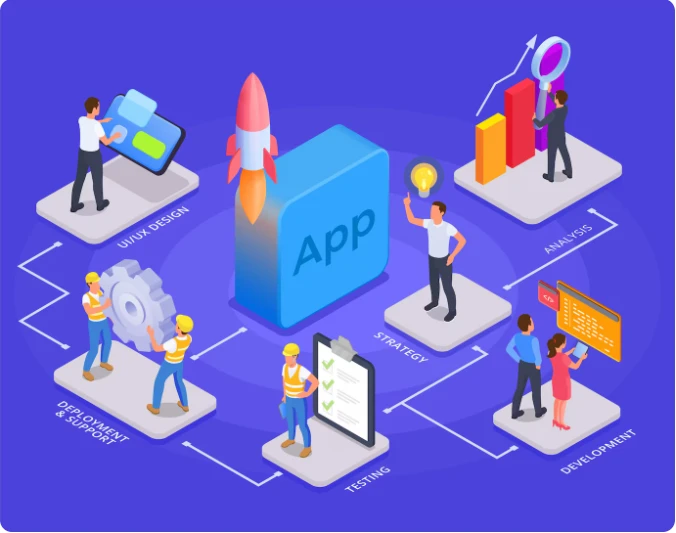
Let me walk you through the actual development process, including the parts that most guides conveniently skip over.
Phase 1: Market Research and Strategy (4-8 weeks)
Competitive Analysis Deep Dive: Don’t just look at direct competitors. Study apps in adjacent markets that solve similar problems. What can you learn from dating apps about user matching? How do travel apps handle complex search filters?
Key questions to answer:
- What features do users actually use vs. what they say they want?
- Where are existing solutions failing users?
- What emerging trends can you capitalize on?
- How do successful apps monetize their user base?
User Research and Personas: Real estate has distinct user types with very different needs. First-time homebuyers behave completely differently from real estate investors or people looking for rental properties.
Research methods that work:
- User interviews with recent property buyers/sellers
- Survey analysis of existing real estate app users
- Behavioral analysis of competitor app usage
- Focus groups for feature prioritization
Technical Feasibility Assessment: Before you fall in love with a feature set, make sure it’s technically and financially feasible.
Critical technical decisions:
- Data sources and MLS access requirements
- Real-time vs. batch data processing needs
- Geographic scope and scalability requirements
- Integration complexity with existing systems
Phase 2: MVP Definition and Planning (2-4 weeks)
Feature Prioritization Framework: Use a modified MoSCoW method specifically adapted for real estate apps:
Must-Have (Core MVP):
- Property search and basic filtering
- Property detail pages with photos
- User registration and profiles
- Contact forms for agent communication
- Basic administrative tools
Should-Have (Phase 2):
- Advanced search filters
- Interactive maps
- In-app messaging
- Push notifications
- Basic analytics
Could-Have (Future phases):
- AI recommendations
- Virtual tours
- Advanced market analytics
- AR features
Won’t-Have (This version):
- Complex financial tools
- Blockchain features
- Advanced CRM integration
Technical Architecture Planning: This is where you make decisions that will affect your app for years. Don’t rush this phase.
Architecture decisions include:
- Database schema design for property data
- API design for third-party integrations
- Caching strategies for property search
- Image storage and delivery optimization
- Security architecture for user data
Phase 3: Design and Prototyping (6-10 weeks)
User Experience Design: Real estate apps have unique UX challenges. Users are making huge financial decisions, so trust and clarity are paramount.
UX priorities for real estate:
- Property browsing should feel effortless
- Complex information must be digestible
- Trust signals throughout the experience
- Mobile-first design with desktop considerations
Visual Design System: Establish a design system that can scale as you add features.
Design system components:
- Typography hierarchy for various content types
- Color palette that works across property photos
- Icon library for property features
- Component library for consistent UI elements
- Photography guidelines for property listings
Interactive Prototyping: Build clickable prototypes for user testing before writing any production code.
Prototyping tools that work well:
- Figma for collaborative design and prototyping
- InVision for stakeholder presentations
- Principle for complex interactions
- Marvel for simple user testing
Phase 4: Backend Development (8-16 weeks)
Database and API Development: Start with your data layer – everything else builds on this foundation.
Key backend components:
- Property data management system
- User authentication and authorization
- Search and filtering engine
- Notification system
- Admin panel for content management
Third-Party Integrations: Plan integrations carefully. Each integration point is a potential failure point and source of ongoing maintenance costs.
Priority integrations:
- MLS data feeds (most complex but essential)
- Mapping and geocoding services
- Payment processing systems
- Email and SMS communication
- Analytics and monitoring tools
Security Implementation: Security can’t be an afterthought in real estate apps. You’re handling sensitive financial and personal information.
Security requirements:
- Encrypted data storage and transmission
- Secure API endpoints with proper authentication
- PCI compliance for payment processing
- GDPR/CCPA compliance for user data
- Regular security audits and penetration testing
Phase 5: Frontend Development (6-12 weeks)
Mobile App Development: Start with the platform that represents your primary market. For most US markets, that’s iOS first.
Development priorities:
- Property search and listing display
- User onboarding and profile management
- Image galleries and media handling
- Performance optimization for large datasets
- Offline functionality for saved properties
Progressive Enhancement: Build core functionality first, then add advanced features.
Enhancement order:
- Basic search and browsing
- User accounts and saved properties
- Agent communication features
- Advanced search and filtering
- Maps and location features
- Push notifications
Phase 6: Testing and Quality Assurance (4-8 weeks)
Automated Testing Strategy: Real estate apps have complex data flows and user interactions. Automated testing prevents regressions as you add features.
Testing pyramid for real estate apps:
- Unit tests for business logic and data processing
- Integration tests for API endpoints and third-party services
- End-to-end tests for critical user flows
- Performance tests for search and data loading
- Security tests for authentication and data protection
User Acceptance Testing: Test with real users in realistic scenarios. Beta testing with actual real estate agents and property buyers reveals issues you’ll never find in lab testing.
Beta testing approach:
- Recruit 20-50 beta users across different user types
- Focus on core user journeys: search, save, contact, repeat
- Track both quantitative metrics and qualitative feedback
- Test across different devices and network conditions
- Document and prioritize issues for resolution
Phase 7: Launch Preparation (2-4 weeks)
App Store Optimization: Your app store listing is essentially your marketing homepage. Most users decide whether to download within seconds of seeing your listing.
ASO essentials:
- Compelling app name and subtitle
- High-quality screenshots showing key features
- Demo video highlighting core value proposition
- Strategic keyword optimization for search
- Compelling description with clear benefits
Marketing and PR Strategy: Start building awareness before launch day. The app stores are incredibly competitive – you can’t just “build it and they will come.”
Pre-launch marketing tactics:
- Content marketing around real estate trends
- Partnerships with local real estate agents
- Social media teasers and behind-the-scenes content
- Email list building through landing pages
- PR outreach to real estate and tech publications
Operational Readiness: Make sure you can handle user support, content moderation, and technical issues from day one.
Operational requirements:
- Customer support system and processes
- Content moderation guidelines and tools
- Performance monitoring and alerting
- Bug tracking and resolution workflows
- User feedback collection and analysis
Phase 8: Post-Launch Iteration (Ongoing)
User Feedback Integration: Your real education starts after launch. Users will use your app in ways you never anticipated.
Feedback channels:
- In-app feedback forms
- App store reviews monitoring
- User interviews and surveys
- Usage analytics and heat maps
- Customer support ticket analysis
Feature Development Cycles: Plan regular feature releases based on user feedback and business metrics.
Release cycle approach:
- Major releases every 3-4 months
- Minor updates and bug fixes every 2-3 weeks
- Critical security updates as needed
- A/B testing for significant changes
- Gradual rollouts for new features
Hidden Costs Nobody Talks About
Every development article gives you the upfront costs, but real estate apps have ongoing expenses that can catch you off guard if you’re not prepared.
Data and API Costs (The Silent Budget Killer)
MLS Access Fees: Multiple Listing Service access isn’t free, and costs vary dramatically by region. Some MLSs charge flat monthly fees, others charge per listing access, and some require revenue sharing.
Typical MLS costs:
- Setup fees: $500-5,000 per MLS
- Monthly access fees: $200-2,000 per MLS
- Per-listing fees: $0.10-1.00 per listing view
- Revenue sharing: 1-5% of transaction-related revenue
For a national app, you might need access to 50+ different MLS systems. Do the math – it adds up quickly.
Mapping and Geocoding APIs: Google Maps seems cheap until you scale. Their pricing tiers can shock you when your app takes off.
Google Maps API costs:
- Map loads: $7 per 1,000 loads
- Geocoding: $5 per 1,000 requests
- Places API: $17 per 1,000 requests
- Street View: $7 per 1,000 requests
A moderately successful app with 10,000 monthly active users might rack up $2,000-5,000 monthly just in mapping costs.
Property Photo and Media Storage: High-resolution property photos and virtual tours consume massive amounts of storage and bandwidth.
Storage and CDN costs:
- Cloud storage: $0.02-0.10 per GB per month
- CDN bandwidth: $0.05-0.20 per GB transferred
- Image processing: $0.01-0.05 per image processed
An app with 100,000 property listings might store 10-50 GB of images per thousand properties. Monthly storage costs can easily reach $500-2,000 for a medium-sized app.
Compliance and Legal Expenses
Real Estate Licensing Requirements: Depending on your app’s functionality, you might need real estate licenses in different states. This is particularly true if you’re facilitating transactions or providing market advice.
Licensing costs:
- Real estate license per state: $200-1,000
- Continuing education requirements: $100-500 annually per state
- Legal consultation for compliance: $5,000-20,000 initially
- Ongoing compliance monitoring: $2,000-10,000 annually
Data Privacy Compliance: GDPR, CCPA, and other privacy regulations require ongoing compliance efforts, not just initial implementation.
Privacy compliance costs:
- Initial compliance implementation: $10,000-50,000
- Privacy policy and terms of service updates: $2,000-5,000 annually
- Data protection officer (if required): $50,000-150,000 annually
- Regular compliance audits: $5,000-25,000 annually
- Data breach insurance: $1,000-10,000 annually
Marketing and User Acquisition
Customer Acquisition Costs (CAC): Real estate apps face high customer acquisition costs because the target audience is relatively narrow and sophisticated.
Typical CACs in real estate:
- Organic search (SEO): $10-50 per user
- Paid search ads: $25-100 per user
- Social media advertising: $15-75 per user
- App store advertising: $20-80 per user
- Content marketing: $5-30 per user
For a premium real estate app targeting serious buyers, CAC can easily exceed $100 per user. Plan your marketing budget accordingly.
Content Creation and Management: Real estate apps need constant content updates to maintain user engagement and search rankings.
Content costs:
- Professional photography: $100-500 per property
- Virtual tour creation: $200-1,000 per property
- Market research and reporting: $2,000-10,000 monthly
- Blog content and SEO: $2,000-8,000 monthly
- Social media content: $1,000-5,000 monthly
Technical Infrastructure Scaling
Performance Optimization: As your user base grows, performance issues that weren’t apparent during testing become critical problems.
Scaling costs:
- Database optimization and scaling: $5,000-25,000
- Search engine optimization (Elasticsearch, etc.): $3,000-15,000
- CDN upgrades for global performance: $500-5,000 monthly
- Application performance monitoring: $200-2,000 monthly
- Database performance monitoring: $200-1,500 monthly
Security Enhancements: Security requirements increase as you handle more sensitive data and attract more users.
Security costs:
- SSL certificates and security audits: $1,000-5,000 annually
- Penetration testing: $5,000-25,000 annually
- Security monitoring tools: $500-5,000 monthly
- Incident response planning: $5,000-20,000
- Cyber insurance: $2,000-15,000 annually
Team Scaling and Expertise
Specialized Talent Acquisition: Real estate apps require domain expertise that’s expensive and hard to find.
Specialized roles and costs:
- Real estate domain expert: $80,000-150,000 annually
- Data engineer for MLS integration: $100,000-180,000 annually
- Mobile developer with mapping expertise: $90,000-160,000 annually
- DevOps engineer for scaling: $100,000-170,000 annually
- Product manager with proptech experience: $120,000-200,000 annually
Knowledge Transfer and Documentation: Real estate apps have complex business logic that needs proper documentation and knowledge management.
Documentation and training costs:
- Technical documentation creation: $10,000-30,000
- Business process documentation: $5,000-15,000
- Team training and onboarding: $5,000-20,000 per new hire
- Knowledge management systems: $200-2,000 monthly
Post-Launch Expenses and Scaling Costs

Launch day is just the beginning. Here’s what you’ll actually spend to grow and maintain your real estate app.
User Acquisition and Retention
Paid Advertising Budgets: Organic growth is great, but real estate apps typically need significant advertising spend to reach critical mass.
Monthly advertising budgets by app stage:
- Early stage (MVP): $5,000-15,000 monthly
- Growth stage: $15,000-50,000 monthly
- Scaling stage: $50,000-200,000+ monthly
The key is maintaining a reasonable CAC-to-LTV (Customer Acquisition Cost to Lifetime Value) ratio. For real estate apps, aim for an LTV:CAC ratio of at least 3:1.
Retention and Engagement Programs: Keeping users engaged between property searches requires ongoing investment in content, features, and communication.
Retention program costs:
- Email marketing platform: $100-2,000 monthly
- Push notification service: $100-1,500 monthly
- Content creation and curation: $2,000-10,000 monthly
- User research and feedback programs: $1,000-5,000 monthly
- Loyalty and referral programs: $2,000-15,000 monthly
Feature Development and Enhancement
Continuous Product Development: Users expect regular updates and new features. Plan for ongoing development costs.
Annual development costs post-launch:
- Feature development and enhancements: $50,000-200,000
- Platform updates and compatibility: $10,000-30,000
- Security updates and patches: $5,000-20,000
- Performance optimization: $10,000-40,000
- Third-party integration updates: $5,000-25,000
User Experience Optimization: Real estate apps need constant UX refinement based on user behavior and feedback.
UX optimization costs:
- User research and testing: $5,000-20,000 annually
- Design updates and improvements: $10,000-40,000 annually
- A/B testing infrastructure: $2,000-10,000 annually
- Analytics and user behavior tracking: $2,000-15,000 annually
Infrastructure and Operations
Scaling Infrastructure Costs: As your user base grows, infrastructure costs increase non-linearly.
Infrastructure scaling costs:
- Server and cloud costs: 2-3x increase per 10x user growth
- Database scaling and optimization: $5,000-50,000 for major upgrades
- CDN and bandwidth costs: Scale directly with user activity
- Backup and disaster recovery: $1,000-10,000 monthly
- Monitoring and alerting tools: $500-5,000 monthly
DevOps and Site Reliability: Maintaining high uptime becomes critical as your user base grows.
DevOps costs:
- Site reliability engineering: $100,000-200,000 annually per engineer
- Automated deployment and testing: $5,000-25,000 setup cost
- Incident response and on-call systems: $2,000-10,000 monthly
- Performance monitoring and optimization: $1,000-8,000 monthly
Legal and Compliance
Ongoing Legal Requirements: Real estate regulations change frequently, requiring ongoing legal support.
Legal maintenance costs:
- Legal counsel retainer: $2,000-10,000 monthly
- Compliance monitoring and updates: $5,000-25,000 annually
- Terms of service and privacy policy updates: $2,000-8,000 annually
- Contract negotiations with partners: $5,000-30,000 annually
Intellectual Property Protection: Protect your innovations and defend against potential infringement.
IP protection costs:
- Patent applications: $5,000-25,000 per patent
- Trademark protection: $1,000-5,000 per trademark
- IP monitoring and enforcement: $2,000-10,000 annually
- Defensive patent strategies: $10,000-50,000 annually
Regional Cost Variations
Where you build your app dramatically affects costs. Here’s the real breakdown of development costs by region.
North America
United States: The US has the highest development costs but also access to the best talent and established real estate tech ecosystem.
Hourly rates by role:
- Senior mobile developer: $100-200/hour
- Backend developer: $90-180/hour
- UI/UX designer: $80-150/hour
- Project manager: $70-140/hour
- QA engineer: $60-120/hour
Total project costs:
- Simple app: $80,000-150,000
- Medium complexity: $150,000-300,000
- Complex platform: $300,000-600,000+
Advantages:
- Deep understanding of US real estate market
- Easy communication and time zone alignment
- Access to latest technologies and best practices
- Strong legal and compliance expertise
Disadvantages:
- Highest development costs
- Competitive talent market
- Higher ongoing operational costs
Canada: Slightly lower costs than the US with similar quality and market understanding.
Cost differential: 15-25% lower than US rates Best for: Companies wanting North American expertise at lower cost.
Europe
Western Europe (UK, Germany, Netherlands): High-quality development with good English proficiency and strong tech ecosystems.
Hourly rates:
- Senior mobile developer: $70-140/hour
- Backend developer: $60-120/hour
- UI/UX designer: $60-110/hour
Cost differential: 20-40% lower than US rates.
Eastern Europe (Poland, Ukraine, Czech Republic): Excellent value proposition with high-quality developers and established outsourcing practices.
Hourly rates:
- Senior mobile developer: $40-80/hour
- Backend developer: $35-70/hour
- UI/UX designer: $30-60/hour
Cost differential: 50-70% lower than US rates
Advantages:
- Excellent technical skills
- Strong English proficiency
- European time zones (good for US East Coast)
- Established outsourcing infrastructure
Considerations:
- May lack deep US real estate market knowledge
- Time zone challenges for West Coast US companies
- Potential communication and cultural differences
Asia
India: Largest pool of developers with the lowest costs, but quality can vary significantly.
Hourly rates:
- Senior mobile developer: $20-50/hour
- Backend developer: $15-40/hour
- UI/UX designer: $15-35/hour
Cost differential: 70-85% lower than US rates
Advantages:
- Lowest development costs
- Large talent pool
- Established outsourcing industry
- English proficiency (varies by provider)
Challenges:
- Significant time zone differences
- Quality variations between providers
- Limited US real estate market understanding
- Communication and project management complexities
Philippines: Growing tech outsourcing destination with good English skills and cultural alignment with Western markets.
Hourly rates:
- Senior mobile developer: $25-55/hour
- Backend developer: $20-45/hour
- UI/UX designer: $20-40/hour
Cost differential: 65-80% lower than US rates.
Hybrid Development Models
Best Practices for Distributed Teams: Many successful real estate apps use hybrid models to balance cost, quality, and market knowledge.
Effective hybrid approaches:
- US-based product management and architecture
- Eastern European development team
- Local QA and user testing
- US-based DevOps and security
Communication and Management:
- Overlapping work hours (minimum 4 hours daily)
- Weekly video calls with full team
- Detailed documentation and specifications
- Regular code reviews and quality gates
- Clear escalation processes for issues
Hidden Costs of Offshore Development Offshore development isn’t just about hourly rates. Factor in these additional costs:
- Management overhead: 15-25% of development costs
- Communication tools and infrastructure: $500-2,000 monthly
- Travel and relationship building: $5,000-20,000 annually
- Quality assurance and rework: 10-30% additional time
- Knowledge transfer and documentation: $5,000-25,000
Frequently Asked Questions
| What’s the minimum budget needed to build a competitive real estate app in 2025? For a truly competitive app that can challenge established players, plan for at least $150,000-250,000 in development costs, plus $100,000-200,000 for the first year of operations and marketing. Anything less will likely result in a basic app that struggles to gain traction. |
| How much should I budget for ongoing costs after launch? Plan for 50-70% of your initial development cost annually for ongoing expenses. This includes hosting, third-party services, feature development, marketing, and team costs. A $200,000 app typically costs $100,000-140,000 annually to operate and grow. |
| Is it cheaper to build cross-platform or native apps for real estate? Cross-platform development (React Native/Flutter) typically costs 30-40% less than building separate native apps. For most real estate apps, cross-platform provides excellent performance while significantly reducing costs. Only choose native development if you need advanced camera features, AR capabilities, or maximum performance. |
| What’s the most expensive part of real estate app development? Backend development and third-party integrations typically account for 40-50% of total costs. MLS integrations, mapping services, and payment processing are complex and time-consuming. Many teams underestimate this complexity and run over budget. |
| How do I compete with established players like Zillow or Property Finder? Don’t try to build a Zillow clone. Focus on underserved markets, specific user types, or unique value propositions. Successful new entrants often win by: targeting specific geographic markets, serving niche user segments (luxury, commercial, rental), providing superior user experience in specific areas, or offering innovative features that larger players can’t quickly replicate. |
| What’s the best monetization strategy for a new real estate app? Start with freemium subscriptions to build a user base, then add commission-based revenue as you scale. Avoid advertising-only models until you have significant traffic. Most successful apps use hybrid monetization combining subscriptions, commissions, and eventually advertising. |
| Should I target consumers or real estate professionals? Consumer apps have larger markets but higher customer acquisition costs. Professional apps have smaller markets but higher willingness to pay and lower churn. Many successful apps start with one segment and expand to others after proving product-market fit. |
| Do I need a real estate license to operate a real estate app? It depends on your app’s functionality. Simple listing platforms typically don’t require licenses, but apps that facilitate transactions, provide market advice, or collect commissions often do. Consult with a real estate attorney early in your planning process. |
Conclusion
Building a successful real estate app in 2025 requires significant investment, but the potential returns justify the costs for well-executed projects. The key is understanding exactly what you’re getting into before you start writing checks.
- Budget realistically
- Focus on user value first
- Plan for scale from day one
- Understand your market deeply
Building a real estate app is challenging and expensive, but the potential rewards are significant. The global real estate software market is growing rapidly, and mobile-first companies are capturing increasing market share from traditional players.
However, success requires more than just building a good app. You need to execute well across product development, user acquisition, business model optimization, and market positioning. Many well-funded real estate apps have failed not because of technical issues, but because of poor execution in these areas.

Empower your digital journey with StruqtIO - Your dedicated partner for cutting-edge custom software development, innovation, and digital transformative solutions. Harness the power of technology to elevate your business and redefine your digital landscape today.
